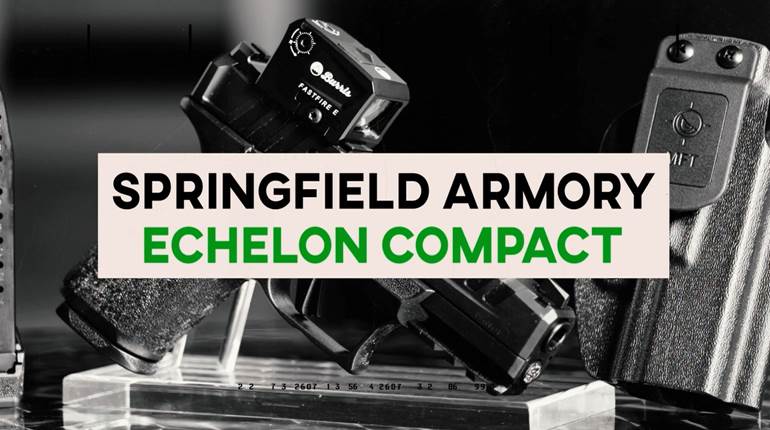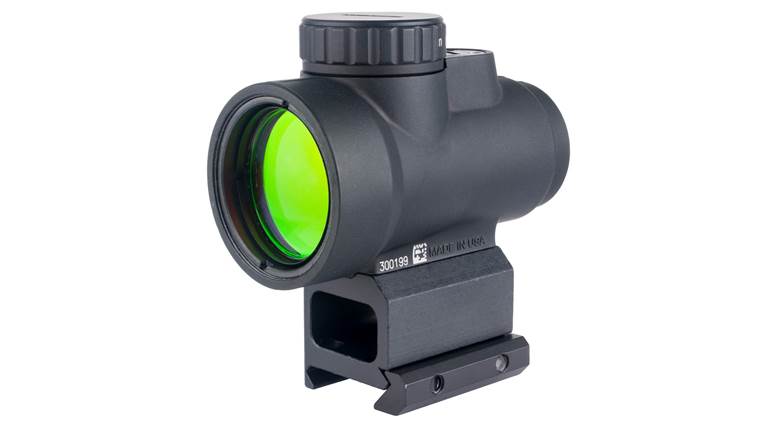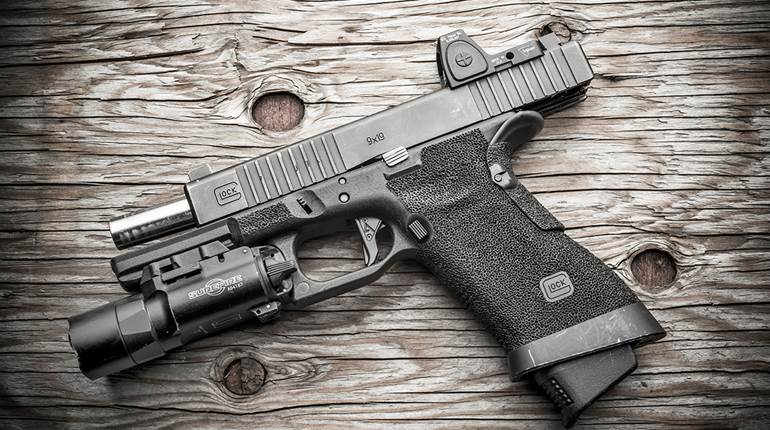
Ten years ago, it was rare to encounter a handgun with an optic mounted atop it, but today it is a far more common thing to see. Many semi-automatics now leave the factory with some sort of provision with which to mount a micro red-dot, and Trijicon’s RMR is one of the most prominent pistol-compatible optics on the market to be developed for use with these guns. In 2020, the company released the RMRcc, a micro red-dot similar to—but even more compact than—its older brother.

As you might have guessed, the “cc” in the new optic’s name stands for “concealed carry,” while the “RMR” still stands for “Ruggedized Miniature Reflex.” The “rugged” moniker is well-earned, as the RMRcc’s internal electronic suite is built within a tough 7075-T6 aluminum housing. The optic is made more durable by a well-thought-out concave shape that transfers the shock from impacts away from the lens.
Two versions of the RMRcc are available, with an internal LED generating either a 3.25-m.o.a. or a 6.5-m.o.a. red aiming point. Powering the unit is a single CR2032 battery that can last up to four years when run at the bottom half of the unit’s eight brightness settings. For this reason, the optic does not have an automatic turn off/on feature, as it simply isn’t necessary.

Instead, it features an automatic reset that puts the unit back into “automatic mode” if 16.5 hours have passed without a button being pressed. In automatic mode, the dot dims to what it deems to be the best setting for the ambient lighting conditions, ensuring that the optic won’t stay at an elevated brightness should the user forget to turn it back down. The user also has the option of disabling this feature by using the “lock-in” mode that gives them indefinite manual control of the unit’s brightness settings. Lastly, owners can also disable the buttons found on either side to ensure that they don’t inadvertently change a setting due to accidental depression.
 We tested our sample RMRcc by mounting it to a Walther Q5 Match with the included plate from the pistol’s manufacturer. As the optic weighs only 1.09 oz., it didn’t impede function and was virtually unnoticeable in both the hand and the holster. At just 0.98" in height, it didn’t get in the way of our daily activities either. Using custom handloaded ammunition to ensure accuracy, we “shot the square” five times from a distance of 10 yards to confirm that the adjustments were consistent and true. Each click moved the point of impact by three minutes of angle, with a full rotation providing 72 m.o.a. of adjustment.
We tested our sample RMRcc by mounting it to a Walther Q5 Match with the included plate from the pistol’s manufacturer. As the optic weighs only 1.09 oz., it didn’t impede function and was virtually unnoticeable in both the hand and the holster. At just 0.98" in height, it didn’t get in the way of our daily activities either. Using custom handloaded ammunition to ensure accuracy, we “shot the square” five times from a distance of 10 yards to confirm that the adjustments were consistent and true. Each click moved the point of impact by three minutes of angle, with a full rotation providing 72 m.o.a. of adjustment.
Between each test, we delivered 10 blows with a mallet to both the front and rear of the pistol to ensure day-to-day jostling wouldn’t be an issue—and it wasn’t. By the end of the test, we had a sheet of paper with four one-hole groups in each corner, indicating that adjustment was correct and repeatable. We finalized our testing by putting the entire pistol in a common kitchen freezer where it was allowed to reach a temperature of 19° F. After four hours, the firearm was removed and we noted the intensity of the fogging. Although the lens was completely fogged, we were still able to easily make out the dot on the fourth-highest power setting, even in a sunny outdoor environment.
Overall, we found the Trijicon RMRcc to be just as capable as its bigger brother—although buyers should be aware that it does use its own unique mounting footprint, which will limit the number of mounts available. Our staff appreciated the easy-to-use controls, including the oversized brightness push buttons and the windage/elevation adjustment turrets. Although an MSRP of $699 puts it on the pricier end of the micro red-dot market, Trijicon has earned its reputation for quality and reliability—and its hard to put a price tag on dependability in an emergency.

















![Winchester Comm[94]](/media/1mleusmd/winchester-comm-94.jpg?anchor=center&mode=crop&width=770&height=430&rnd=134090756537800000&quality=60)
![Winchester Comm[94]](/media/1mleusmd/winchester-comm-94.jpg?anchor=center&mode=crop&width=150&height=150&rnd=134090756537800000&quality=60)


















